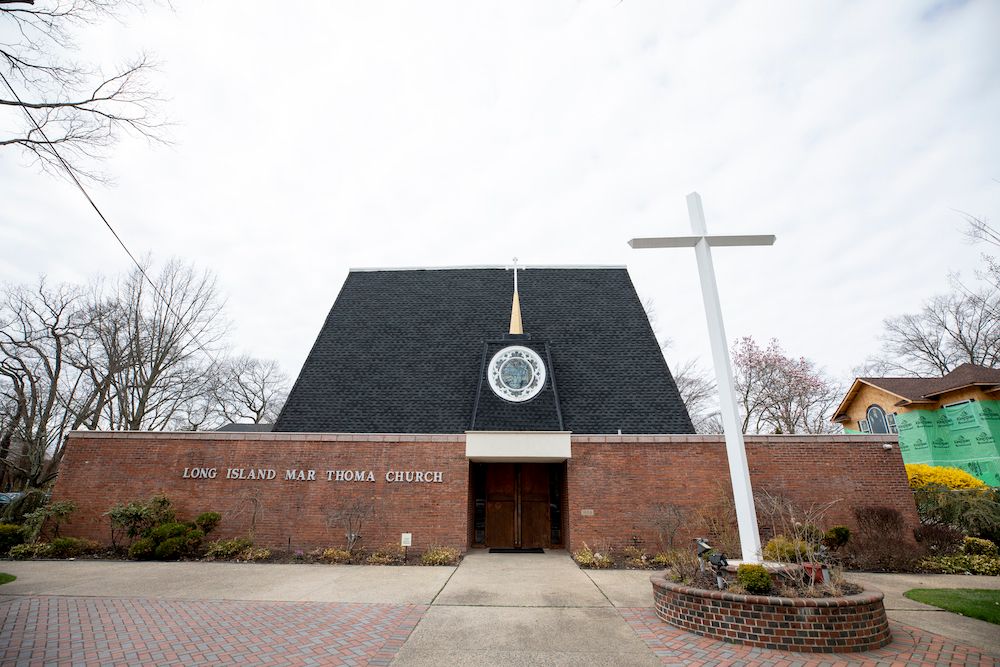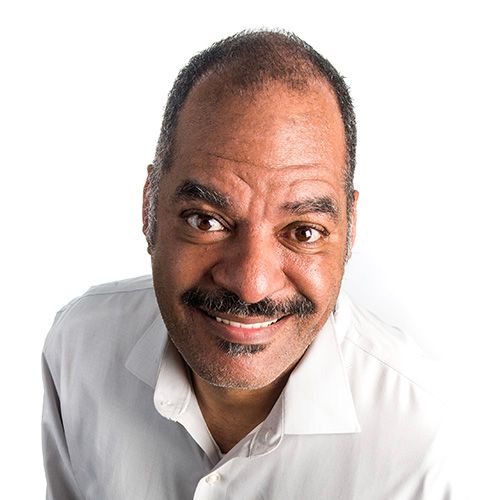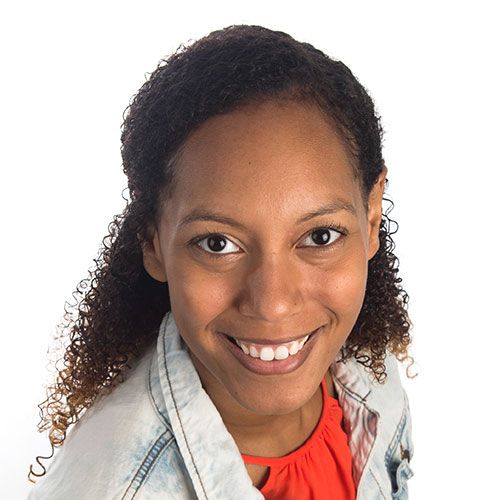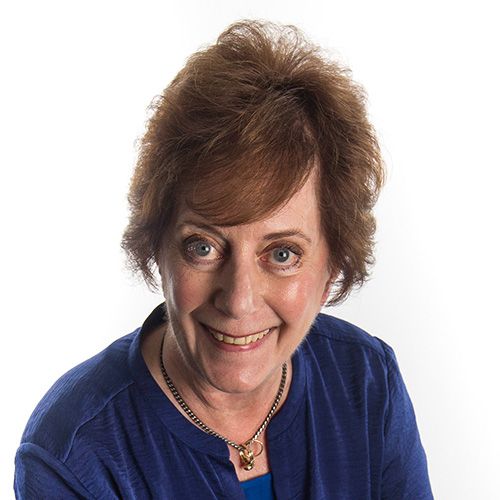State-required continuing education classes in real estate law and practices are supposed to cover fair housing regulations and how agents and brokers might deliberately or unintentionally discriminate.
Instead, in five of six classes attended by Newsday reporters, instructors provided information that was sometimes or often inaccurate, incomplete, confusing or lacking in quantity and quality, according to eight fair housing experts who reviewed transcripts and notes of the sessions.
Some instructors made comments about ethnic and religious groups that risked reinforcing discriminatory attitudes, the experts said. One instructor likened fair-housing laws to speed limits faced by a cab driver rushing a customer to the airport, telling students: “You get to choose whether you break the law.”
Other instructors filled class time with irrelevant material, such as reviews of television shows and descriptions of funeral rituals.
One described Rockville Centre as “lily white,” referred to West Islip as “white Islip” and used derogatory racial and religious terms.
Only one of the six classes included the required three hours of fair-housing law training.
The experts examined the transcripts of four classes in which instructors set no rules against recording or quotation. They also reviewed notes on one class where the instructor barred recording but placed no restrictions on quoting. The instructor in the sixth class said she did not want to be quoted.
The instructors included the president of the Long Island Board of Realtors and three former presidents, including one who is now an attorney for the board.
New York State law requires real estate agents to attend 22.5 hours of continuing education every two years to renew their licenses. The material must include the three hours of instruction in upholding anti-discrimination laws. The state permits up to 10 minutes of break time during each hour of instruction.
Many agents opt to take in-person classes to keep their licenses up to date. LIBOR reported 14,034 registrations for its own classes and 9,703 registrations for online classes in 2017, its most recent available tax filings show. To see how Long Island agents were trained, Newsday reporters registered online for in-person fair-housing classes offered by LIBOR.
“The trainers veered pretty far away from actually covering the important topics that a Realtor or real estate agent would need to understand in order to comply with their obligations,” said Thomas Silverstein, associate counsel with the Fair Housing & Community Development Project at the Lawyers’ Committee for Civil Rights Under Law in Washington, D.C., who reviewed transcripts and notes from three classes.
What agents must know
Agents and brokers bear the responsibility for applying fair housing standards as they guide customers to housing choices. Industry representatives have contended that proper training is the best way to ensure agents uphold fair housing laws, arguing against more aggressive enforcement through fines, license suspensions or revocations.
“If you don’t educate real estate professionals about not only the history of fair housing and housing discrimination in America but about current ways that discrimination is being manifest, then you’re losing out on the opportunity to educate these professionals about how they can actively support fair housing efforts and strengthen all communities,” said Lisa Rice, president of the National Fair Housing Alliance in Washington, D.C., who teaches fair housing classes at real estate conferences.
The Department of State publishes a fair housing curriculum. Among the topics to be covered: anti-discrimination laws; the practice of “steering” minorities and whites to different areas; the promotion of racial or ethnic fears to spark “blockbusting,” or panic selling; and the so-called protected classes, such as race, color, religion, national origin, age, sex, disability and family status.
On LIBOR’s website, an online fair housing course produced by a Colorado-based company covers all those topics and more. Students must spend at least 2 hours and 30 minutes taking the online class.
The course states that the Civil Rights Act of 1866 protects all Americans from housing discrimination, regardless of race or color and with no exceptions. It lists the seven protected classes under the Fair Housing Act of 1968, and it describes exceptions under that law.
The study material also ranges from explaining hard-to-detect forms of illegal bias, such as setting higher standards for minorities than whites, to outlining under what circumstances a senior housing development can legally exclude families with children.
Warning against “well-intentioned discrimination” – such as making assumptions about what clients want based on their national origin – the course offers anecdotes about situations agents might face to illustrate how to avoid fair housing violations. In one anecdote, for example, a landlord urges an agent to “screen a little harder” as a way to discriminate against tenants by race and sex.
The Long Island classes
By contrast, one of the six in-person classes Newsday attended included only 20 minutes on fair housing. Another included 35 minutes. Three others ranged from about 50 minutes to about two hours on the topic.
In three classes, instructors asked class members to identify themselves; the reporters did so and stated their Newsday affiliation. In one of those classes, instructor Linda Damico said she did not want to be quoted, and Newsday is abiding by that condition.
The experts consulted by Newsday said that Nicholas Gigante, who has served as president of LIBOR, gave the most informative instruction. He was the only instructor who spent the state-mandated three hours on fair housing and discrimination.
Leading a class of about 20 students at the Best Western Mill River Manor in Rockville Centre, Gigante detailed fair housing and civil rights milestones. He separated the class into groups and challenged them to come up with answers to questions about protected classes, the year the Fair Housing Act was passed (1968) and whether sex offenders are covered by antidiscrimination laws (they are not).
In between, Gigante provided advice.
“A lot of buyers will call you up: ‘I want to live with my own kind.’ You ever heard that one? I’ve heard that quite a few times,” he said. “In our business if we only show them those properties or make available those properties, that would be steering.”
He added: “I know the stories that you’ll probably tell me: that you’ve had landlords, buyers and sellers who actually want you to discriminate. And your job is to say, ‘I’m sorry I can’t do that because what you’re asking me to do would violate fair housing laws, federal, state and local.'”
In an interview with Newsday in October, Gigante said fair housing can be a “tough topic,” so instructors need to give detailed information in an engaging way. He said agents “come in thinking they know everything, and then I prepare them and I teach them that ‘maybe you don’t know everything.'”
‘Shockingly thin on content’
Dianne Scalza, an associate broker with three decades of experience, is president of LIBOR, chair of the New York State Association of Realtors’ Education Management Committee and former chair of NYSAR’s Professional Standards Committee.
LIBOR’s website described her course, titled “Ready, Set, Buy! Representing a Buyer in a Real Estate Transaction,” as covering topics such as “fiduciary responsibilities to your buyer/client” and compensation. The course description promised “Mandated 3 Hours Fair Housing.”
Newsday observed two sessions. In one, 20 minutes elapsed from the moment Scalza began speaking about fair housing to her announcement that she had concluded the instruction.
During that time, she said landlords and agents may not ask buyers or renters how many children they have or what religion they practice and stated that discrimination against gay people is illegal. She said an agent cannot fulfill a client’s request for a home “in a Jewish neighborhood.”
Despite her warnings that students should not ask about protected characteristics such as race and religion, she made a blunt inquiry.
“Now, anybody here Jewish?”
Pressing further, she asked one student, “you’re not Orthodox, are you?”
Continuing that she had “a lot of friends who are Jewish,” Scalza said some did not adhere to kosher standards.
Scalza, who said she is of Irish descent and called bias “disgusting in today’s world,” also related this anecdote:
“I can remember somebody saying to me once, ‘You taking those Mafia people out?’ ‘What makes you think they’re Mafia?’ ‘Did you see their license plate? Garbage 1 and Garbage 2?’ They were paying cash! I didn’t ask them where their cash was coming from.”
She called Rockville Centre “lily white” and referred to West Islip as “white Islip.”
She also implored the class to treat everyone fairly.
About 16 minutes after she announced the start of fair-housing instruction, Scalza spoke to an African American class member, saying to her:
“We may not look alike, but deep down inside, you’re still my sister. If we could just treat people with that kind of kindness, it would be a wonderful thing. OK, so fair housing. OK, we covered that.”
A student then asked what to do if a landlord does not want tenants with children. Scalza correctly replied that the landlord “can’t deny that particular family an apartment” if the number of people in the apartment would not violate the law.
If the landlord insisted on refusing children, Scalza advised, “You cannot take the listing. It’s that simple.”
Aside from that 20-minute segment, Scalza made no reference to fair housing or discrimination in her all-day course, other than a comment offering insight into how school district preferences can become proxies for race in house hunting, saying of one client:
“She didn’t want Bay Shore because they didn’t like the school district. I have to tell you, Bay Shore is actually a good school district. What people are really saying is that there’s too many minorities there. You need minorities. You can’t grow up without minorities. You have to work with other people of all different sizes, shapes, colors, creeds, whatever.”
Scalza recalled taking that same client to a house that was “done soup to nuts. Now if you’re Italian I’m not saying this to insult you, but it was a very Italian house. Lots of molding. I’m surprised it didn’t have plastic seat cushions.”
In a second session observed by Newsday, Scalza asked a few class members to identify themselves. The Newsday reporter identified himself.
In that class, Scalza touched on fair housing issues in a roughly 90-minute stretch interspersed with unrelated matters. She informed students about six of the seven federally protected classes: race, color, religion, national origin, sex and familial status. She played a video that mentioned the seventh federally protected class, people with disabilities. She also talked about sexual orientation, which is protected under state and local laws.
However, she did not give her students a list of the seven other characteristics protected under state and local fair housing laws, including age, military and veteran status, marital status and source of income. She did not discuss any specific laws or United States Supreme Court cases.
Scalza described standing up to a home seller who tried to prevent a sale to a mixed-race couple.
“If she’d refused to sell, I would have been required to release the listing and report it to HUD,” Scalza said, referring to the federal Department of Housing and Urban Development.
She told students she has sold homes to people who are Muslim, black, Christian and Jewish, “anybody you can think of, I’ve probably sold.”
She played a video about fair housing. However, she stopped the video after about 15 minutes, saying: “You have all your fair housing regulations in your offices. There’s another 30 minutes or so. You got what it’s about.”
Warning students not to use offensive words, Scalza recalled that she once joked to a Jewish friend that a house in the Hamptons had burned down through “Jewish lightning.”
The phrase is derived from an anti-Semitic stereotype that a Jewish landlord or property owner committed arson to collect insurance proceeds. Her friend, Scalza recalled, “was very offended by that. And, you know, it breaks my heart to hurt. I would never do that. I would never do it intentionally.”
The term “is much less common now than it may have been decades ago, but you still see it show up now and then,” said Aryeh Tuchman, associate director of the Center on Extremism at the Anti-Defamation League.
Using the term reinforces anti-Semitic stereotypes, he said.
In addition, Scalza repeated an Italian-language slur for African Americans, recalling that she had been unfamiliar with the word before a home seller used it.
Newsday asked five experts on fair housing training to review Scalza’s two course presentations, based on information provided by Newsday. Two of the experts have headed fair housing organizations that train real estate agents, and three are attorneys who specialize in fair housing and conduct fair housing training.
The five experts said unanimously that the course presentations lacked basic information agents need to help them abide by fair housing laws and that some of Scalza’s statements regarding racial and religious bias could reinforce stereotypes rather than dispel them.
The two classes taught by Scalza were “shockingly thin in content,” said Silverstein, of the Lawyers’ Committee for Civil Rights Under Law. “There was no clear organizational structure for what limited content there was regarding fair housing.”
Silverstein added, “Although it may have been the intent of the trainer to use examples that touched upon racial, ethnic or religious stereotypes to undermine those stereotypes, the transcript leaves substantial question as to whether she actually achieved that purpose rather than having the effect of reinforcing those stereotypes.”
Invited to speak with Newsday, Scalza said she is deeply committed to providing equal opportunities to all home buyers, and she said she has stood up to home sellers who tried to discriminate. She said she believed she had provided more than 20 minutes of fair housing instruction.
“I feel so strongly about fair housing and the right to live where you want to live that I’m glad you sent me the letter,” she said, referring to a letter from Newsday describing its findings about her classes. “Because maybe the way I’m doing it, although my passion is there, maybe it might be misinterpreted and I certainly wouldn’t want that. So I thank you for that.”
She said the stories she told about expressions of prejudice were intended to educate students about ways people might inadvertently offend others or discriminate. “I just tell my students, when you put that Realtor hat on you have to leave your prejudice at the door,” she said. “I can’t tell people not to be prejudiced. That’s a moral thing. But what I can do is, I can give them examples of everyday things that happen that you may not realize that you say, that you do, and how is that affecting those people? That’s really what I’m trying to get across.”
Scalza said: “We have met with our education director who has said, ‘we really have to, if this is truly happening,’ and she said, ‘then, we have to go back and revisit what we’re doing,’ and I understand that. Can I do it better? I’m teaching a long time. I’m sure I can. Do I want to? Without a doubt.”
‘Confusing’ instruction
A former LIBOR president, Donald Scanlon, spent about two hours on fair-housing topics at a class held in LIBOR’s West Babylon training facility in October 2018.
He devoted the first hour of the advertised three hours primarily to business topics, including LIBOR’s recent election of officers, real estate’s impact on the economy, property taxes, foreclosures, short sales, flood insurance, certificates of occupancy, LIBOR’s political action committee, his own recent home sale and a proposed professional services tax.
He spent three minutes describing a LIBOR gathering where he said 30 to 40 people lined up to ask questions after a talk about fair housing.
He also devoted six minutes to blockbusting, the practice of inducing panic sales by warning homeowners that people of a different race or ethnicity were moving in.
He told students that the state created “cease and desist” lists of homeowners who could not be contacted by agents.
Those lists have been have been instituted in certain sections of Queens, “and we’re fearful that it could spread into Nassau County,” he said.
Contacting homeowners, he added, “is our lifeblood.” He said a former elected official who supported the lists was “really not a friend of ours anymore.”
Before giving students a 10-minute break, he told them, “I’ve just spent almost an hour of our time, so I’ve got to start moving quickly into fair housing here, OK, which is not going to be hard.”
After the short break, Scanlon spent one hour and 50 minutes discussing fair housing issues. Two experts on fair housing training who reviewed a transcript of Scanlon’s three-hour class called his instruction incomplete, confusing and at times inaccurate.
Describing an agent’s obligation, Scanlon said, “You and I can provide every person with the same opportunity to either purchase, lease or occupy residential real property.” He added, “If we provide them with that opportunity, that’s an opportunity for us to make some money.”
“I’m trying to share with you here how not to get caught and the way not to get caught is not to violate the law, and the way not to violate the law is to know what the law is,” Scanlon advised.
“Then if you do get caught it’s your choice. I’m telling you, the speed limit out here is 55 miles an hour. If you choose to do 65 miles an hour, that’s your choice.”
“That’s all I’m trying to accomplish today,” he added. “If you know what the law is, if you know how you can get caught and you can decide how far are you going to push, you can decide.”
He compared real estate agents with a cab driver who is asked to get a passenger to the airport quickly and must decide whether to speed:
“You get to choose whether you break the law,” he said.
He warned that house hunters who believe they have faced bias can sue.
“Why are they doing this? Money’s the answer. What was the question again? Money is the answer,” he advised.
Scanlon told the class he had three rules to impart about fair housing.
The first focused on how to proceed if charged with violating the law.
“It’s always cheaper to settle,” he said. “Even if you did nothing wrong, it’s cheaper to settle.”
Scanlon’s second rule: “Don’t draw attention to yourself. Fly under the radar.”
As an example, he recommended that agents take care with the wording of advertisements.
Scanlon compared real estate agents who draw attention to themselves with motorists driving red cars: “Even if you’re doing nothing wrong, you have increased your chances of being pulled over, haven’t you, because you’re driving a red car.”
Scanlon’s third rule called for removing any references to “who” – that is, to people rather than homes – “out of any marketing, advertising and vocabulary.”
“Because the moment that I start talking about” people, he explained, “I am talking about someone who is ultimately in a protected category.”
Stressing that anti-discrimination laws cover more than race or color, Scanlon listed the seven classes of people covered by federal fair housing law and said that state and local laws had been extended to cover additional groups of people.
He outlined the history of fair housing laws, from the Civil Rights Act of 1866 through the modern era and explained the restrictions that once prevented blacks from buying homes in Levittown.
He noted that the Rev. Martin Luther King Jr. was assassinated in 1968, and President Lyndon Johnson signed the Fair Housing Act into law soon after. “He had 50 percent of the country said do it and 50 percent said don’t do it. So here’s a lose-lose situation,” Scanlon said of Johnson.
“This law, in order to get it through Congress, had to allow for some exceptions saying it’s OK to discriminate under these circumstances,” Scanlon said. But over the decades, new federal, state and local laws have granted rights to more groups, he noted, giving numerous examples such as women, people with disabilities and others.
“So, just remember if they breathe, they’re protected,” he said.
Pointing out that discriminatory treatment may not be “blatantly obvious,” Scanlon said agents should pay attention even to how they return phone calls.
“Not returning a phone call is considered refusing to show a property to somebody,” he said.
Focusing the class on steering, Scanlon warned that home buyers often want to know “who their neighbors are going to be.” He added: “And we can’t help them with that.”
Kevin Cremin, director of litigation for disability and aging rights for Mobilization for Justice Inc. and a lecturer at Columbia Law School, said Scanlon’s first two rules – it’s always cheaper to settle, and don’t draw attention to yourself – bring a “moral or legal ambiguity” into the discussion, as if “it doesn’t matter what you’re doing [if you] don’t draw attention to yourself.”
William Tisdale, president and chief executive of the Metropolitan Milwaukee Fair Housing Council, called Scanlon’s instruction “confusing” and at times inaccurate, particularly in the discussion about blockbusting.
Invited by Newsday to discuss his class presentation, Scanlon said in an interview that he covered topics such as flood insurance and taxes as he opened the class to get the attention of agents, who often regard fair housing instruction as a “pill” they must take every two years.
He asserted that he nonetheless gave enough instruction time because the state allows three 10-minute breaks and he gave only one 10-minute break.
“When you say to a real estate agent, ‘you have to take three hours of fair housing,’ they’re going to go, ‘ucchh,'” he said. “And so you have to bring it down to reality for them. You really do. Because a lot of agents don’t know that they’re doing something wrong.”
In fact, he said, he believes that blockbusting – when agents tell homeowners that new residents of a different ethnic background are moving into an area and urge them to sell their homes before they decline in value – is going on in Nassau County communities such as Elmont, Valley Stream, Franklin Square, Hicksville, Uniondale and Hempstead.
He acknowledged that his description of violating the speed limit may have given a wrong impression, adding that his fiancée had suggested so after reviewing Newsday’s description of the class.
Scanlon recalled: “My fiancée said, ‘Well, Don, you know, they might even consider, you know, that you’re saying that it’s OK to do 65 miles an hour as long as you don’t get caught.’ No, it’s not OK. That’s not what I meant. But if some people interpreted that, then I’m going to have to, perhaps, readjust the way I cover fair housing, or readjust that particular topic.”
He said that he has moved fair housing instruction to the start of his classes to have students at full attention and is devoting a full three hours.
Discussing enforcement of fair housing laws, he said both that the statutes serve a purpose and that testing can go too far.
“And, you know, look, I understand the purpose of the laws. I certainly do. I understand the purpose of the testing. You know, I think sometimes it can be a little too aggressive.”
Scanlon said agents who are tested and violate the law should be given a warning if it’s their first offense. “Then it would show that, ‘Hey, look, we’re looking to work with you. We’re not adversarial…. Look, we’re going to give you a warning this time. If it happens again, you’re going to get nailed, big,'” he said.
‘Short shrift’ to fair housing
An attorney and former real estate broker, Cathleen Nolan is a former LIBOR president and answers a LIBOR legal help line for agents and brokers. She taught an all-day class in November that primarily focused on commercial real estate transactions involving investment properties. The course documents said Nolan would cover three hours of fair housing instruction.
She spoke about the topic for a period of less than 45 minutes that included:
- Four minutes devoted to stories about her mother’s misadventures in cars.
- Four minutes given to her grandmother’s military service during World War I, and television shows, such as Amazon’s “The Man in the High Castle,” Showtime’s “The Handmaid’s Tale” and the Fox series “The Americans.”
- Seven minutes focused on the so-called comfort animals that qualified renters may house in apartments.
Nolan spent less than a minute talking about steering in the remaining half hour of the fair housing instruction.
Facing about 20 students, she recounted fair housing and other civil rights laws from 1866 through modern times, emphasizing that the 1866 Civil Rights Act prohibits all bias based on race or color, with no exceptions. She also touched on the three Civil War-era amendments to the U.S. Constitution that sought to grant equality to black Americans.
She listed the protected classes under federal, state and local laws, and spoke about discrimination based on race, religion, gender, sexual orientation and disability, among other classifications.
Discussing steering, Nolan said: “Steering is when you decide where somebody has to live based on how he looks, the church he attends, all kinds of different things. All protected classes.”
She cited as an example a landlord wanting to rent to gay couples, recalling that when she worked as a broker “all the landlords seemed to want the same tenants, a gay male couple.”
Briefly, Nolan searched unsuccessfully for information she said she had received from the New York City Human Rights Commission.
“Just go under nyc.gov human rights and you’ll come up with all this stuff,” she told the class. “You can’t do anything if you’re a landlord or broker. The only ones with any rights apparently are the tenants.”
She also asserted: “Nobody’s got pets anymore. They have comfort animals. You think they’re stupid? They go online and you can print something out and it’s from a doctor, 30 bucks or something, and the doctor says you need a comfort animal.”
Nolan said landlords may not charge tenants extra security fees or rent if they live with such animals and she counseled against asking someone whether they have a service animal.
In her discussion of laws governing the rights of protected classes – which in Suffolk County includes a ban on discrimination against domestic violence victims – she told the class:
“The real problem is the victims of domestic violence. That’s pretty terrible because if, let’s say somebody’s been shooting at someone for a while and now that person wants to move into your two-family house and you have kids, you don’t want somebody coming along shooting at your tenant and maybe hitting your kids, right?
“But they are protected. It’s a protected class and we’ve got to be careful. All right? Now does that mean you have to take them if they’re victims of domestic violence or if they’re in the military or if there’s, you know, if they’re, if they’re gay? No, you just can’t refuse to take them for that reason.”
She urged agents to “stay away” from rentals, and she recommended that agents who list rental apartments hold an open house.
“When you have a room full of people it’s hard for any one of them to say, ‘Oh, you’re discriminating against me,'” she said.
Cremin, of Mobilization for Justice, called Nolan’s discussion of domestic violence “disturbing,” saying that Nolan seemed “against the idea that people, victims of domestic violence, are covered” by fair housing laws.
Tisdale, of the Metropolitan Milwaukee Fair Housing Council, said, “That’s almost, ‘how not to get caught doing something bad’ as opposed to, what to do to make sure everyone has the same information.”
Nolan said she was surprised to hear she spent less than 45 minutes on fair housing when she covered the topic during the afternoon section of her all-day class. She said she has realized she was giving “short shrift” to fair housing, and has moved that instruction to the morning, when students are paying closer attention. She said she now gives the mandated three hours.
“I find it that they’re more alert in the morning. It’s worked out much better,” she said.
On the topic of protections for victims of domestic violence, she said her goal was to help agents understand the perspective of landlords who might fear for their family members’ safety. Landlords are “worried,” she said, but agents “have to understand that these people need housing, and they’re supposed to be protected as well.”
Tisdale said he believes the state should monitor fair housing instruction and “make their own conclusions about whether it meets the requirement.”
Newsday asked the Department of State about its monitoring of continuing education classes from 2016 through 2018. The agency said it monitored four classes in January and February this year, and all were in compliance.
Gigante, who gave three hours of instruction, said in more than 30 years of teaching, “I don’t think the Department of State has ever sat in on any one of my courses, or anybody else’s for that matter, not that I’ve heard of.”
The department licenses agents and is responsible for supervising continuing education of agents and brokers.
– With Mark Harrington



































